Inertialess carp reels differ from inertialess feeder and especially spinning reels. We talk about these differences and nuances of choice in this article.
Carp reels have large stock spool capacity in contrast to feeder and spinning reels. The size from 5000 to 12000 is a normal dimension. This is due to the need to use large diameter cords. It is also necessary to provide a high casting distance - up to 100 meters. And the ability to play off the line when biting a large carp.
- one of the essential parts of any carp reel. This is the friction brake instantaneous release mechanism. A baitrunner is needed in the following situations:
- To set a carp rod on with an alarm, so that when a carp bites, the tip of the rod does not bend, but the line is reeled due to the completely open mechanism of the descent of the line by the baitrunner.
- For very convenient measurement of bottom depth with a marker float.
![]() Front clutch or rear. The rear clutch is much more convenient to use than the front one, because it is located in a place free from line tension - under the reel. While the front drag can sometimes be blocked by line tension and in a matter of seconds can make it impossible for you to continue fighting carp, it will simply break the line.
Front clutch or rear. The rear clutch is much more convenient to use than the front one, because it is located in a place free from line tension - under the reel. While the front drag can sometimes be blocked by line tension and in a matter of seconds can make it impossible for you to continue fighting carp, it will simply break the line.
To prevent a break in the gear in any case, you must initially set the friction brake correctly so that it is not tightened to the stop, but works under critical loads. And in calmer circumstances, you can easily practice setting the drag when you want the carp to wind up the line a little and get tired.
The front clutch is more sensitive than the rear and on coils high class are exactly the front clutch.
Good line lay affects the casting distance and this is also a very important indicator, which, unfortunately, is poorly developed for coils of non-advanced manufacturers or models of very budget class.
It is better to choose a long and shallow spool. It ensures even line lay and, most importantly, ensures long, smooth and accurate casts. And due to the fact that the spool is long, the line rarely touches the sides, and, accordingly, wears out less.
The reel can lay line different ways: , cylinder or straight cone. A good reel lays the line very evenly, with a cylindrical winding from the side to the side there should be a straight line. When laying with a reverse cone, the line is laid at the front side more than at the back. This allows you to cast even light rigs on long distance while not causing the creation of so-called beards.
Timber stacker. When choosing a coil, pay attention to how rigid the shackle is in the open state. If the fixation is loose, then there is a high probability that the shackle will close right during the cast, and this can lead to a break in the line and loss of equipment. In the store, it is easy to check the rigidity of the fixation. You need to shake the reel several times, and if the line stacker is closed, then this reel is not worth buying. Also inspect it for scratches, burrs and other defects. A fishing line can cling to them when winding.
Ball bearing in the line stacker. The place from where the fishing line enters the spool, bending around the line stacker, must necessarily have a ball bearing, not a bushing. This contributes to less twisting of the fishing line. Without a ball bearing, sooner or later the mechanism will wear out and stop spinning, which will lead to severe wear of the fishing line and its possible breakage.
Power gear ratio. Any inertialess gear has a gear ratio - how many revolutions does the line stacker make around the spool for 1 revolution of the reel handle. For carp reels, this number should fluctuate around 4.2-4.6 to 1. This was done to reduce the leverage and smoother winding of the fishing line with a power load on the rod and on the reel.
Power handles. Convenient to use reels with power handles. Professional reels have monolithic handles.
Pay attention to completeness. Usually, manufacturers add a spare spool, moreover, of a different size. This is convenient if you need a different diameter line.
Ease. In carp fishing, the lightness of the tackle is secondary, but not the last. The lighter the reel, the easier it is to work with, but still don't buy a reel made of plastic. by the most the best option will purchase a coil with a plastic body and metal internals. And the spool of the reel must be metal.
The best models of carp reels
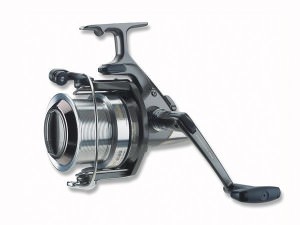 Daiwa Emblem Pro 5000 Coil at a price of 6700 rubles.
Daiwa Emblem Pro 5000 Coil at a price of 6700 rubles.
Carp inertialess medium class, in its composition has:
- 7 steel bearings, 2 of which are anti-corrosion;
- 10 disc drag system for sensitive tuning even on the toughest lines
- 5000 capacity spool with extended design for long casts;
 Coil Infinity-X 5500 BR at a price of 18600 rubles.
Coil Infinity-X 5500 BR at a price of 18600 rubles.
This is a power reel with a line capacity of 0.45 to 270 meters!
- It is supplied with multiposition smooth adjustment of a brake.
- Reverse spool (ABS) reduces beard formation and maximizes casting distance.
- Anti-twist coated with titanium nitride and hard chrome is protected from moisture and dirt.
- The increased diameter of the spool contributes to an increase in the power speed of winding the line.
- 5 long life ball bearings.
- The gears are made of bronze and a special alloy.
- The gear ratio of 4.2:1 characterizes the coil as one of the most powerful.
 Carp Reel Daiwa Black Widow 3500-5000 at a price of 2700 rubles.
Carp Reel Daiwa Black Widow 3500-5000 at a price of 2700 rubles.
Ideal for carp fishing. Ideal in terms of price / quality ratio.
- 3 ball bearings (2+1);
- baitrunner mechanism;
- holds 130 meters of fishing line with a diameter of 0.45 mm;
- aluminum spool;
- rotation balancing;
- durable return spring;
There are several types of reels for spinning rods. These are ordinary inertial coils, inertialess and multiplier.
Inertial coils
The most simple and inexpensive coils are inertial, they are easy to operate and do not require special care. Most of these reels are not equipped with a braking mechanism, so during casting, to prevent unnecessary derailment, the angler has to slow down the reel drum with his finger. Only a small part of the inertial coils on the market have systems automatic braking, which are based on the fact that during casts, the line exerts pressure on a special lever, which in turn is connected to the brake mechanism. A simpler version of braking is a constant braking mechanism, when the angler independently sets the braking force of the drum based on the weight of the bait or load being cast. When choosing an inertial reel, you should pay attention to the quality of the material from which the reel is made, to the exact balanced rotation of the drum and the ease of its movement. On high-quality inertial coils, there must be a mechanism for regulating the rotation of the drum and reducing the backlash, made in the form of a screw and a lock nut.

Spinning coils
The principle of their operation differs from the principle of operation of inertial coils, in that the fishing line "merges" with a fixed spool, due to the gravity of the load being thrown. During the cast, the flying weight drags the fishing line along with it, pulling it off the fixed spool. Most reels come with one or more spare spools and a cork liner. Such reels are more convenient, when casting, you do not need to use braking and the use of inertialess reels allows you to use even the lightest baits, to make fairly long casts. A necessary condition for the possibility of such casts is the complete filling of the spool with fishing line. Almost all spinning reels are equipped with an adjustable friction device, which reduces the risk of line breakage during strong jerks during the fight. Also, these reels have a reverse rotation stopper mechanism. There are high-speed and traction reels, their difference lies in the number of bearings and rotation handles, for traction reels the handle is more massive and has a larger shoulder. Type drive mechanism, spinning coils can be divided into several different types.
1. Bevel gear spools use straight gears and are easy to manufacture, however given type the gearbox does not provide a smooth ride, therefore the least convenient.
2. Coils with bevel hypoid gear, unlike the first option, they use gears with an oblique tooth, which greatly increases the smoothness of rotation.
3. Screw-driven coils provide smooth rotation through the use of a combination of gear-worm mechanism.
All spinning reels are equipped with a line guide that should work effortlessly. The line laying roller must be rotating, there must be no gap between it and the “thrust bearing”. For added convenience, the friction brake control should be located on the back of the reel body. On some reels, it is possible to mount the drive handle on either side, which allows you to adjust the reel “for yourself”.

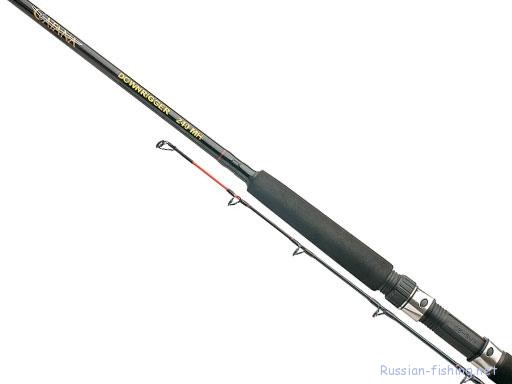
Multiplier reels
They are the most expensive and difficult to manufacture. These reels are a combination of inertia and non-inertia reels and combine ease of casting with fairly high line control. The inertia of the multiplier reel is low due to the use of drums with a very small diameter. For braking, they use brake mechanism centrifugal type, the braking force of which can be adjusted using interchangeable weights, that is, in fact, the interchangeable weight is a centrifugal brake. However, the angler needs to additionally control the rotation of the reel drum, and sometimes slow down the drum with his finger. Excess line coming off can lead to tangling, and in multipliers it is much more difficult to unravel it than if the entanglement occurred in an inertial reel. Baitcasting reels are suitable for almost anyone, however casting very light loads with such a reel requires a lot of practice and skill in handling it. Despite the difficulty in operation, high cost and rather large weight, this is the most durable and reliable coil, especially when catching large fish, where power hauling is required.
Online video about spinning reels

What should be the parameters of the spinning tackle reel? What should you pay attention to when buying? These questions concern not only beginners, but also anglers with experience.
Spinning reels are different:
- to size;
- friction brake;
- the number of bearings;
- gear ratio;
- they are non-inertial or inertial.
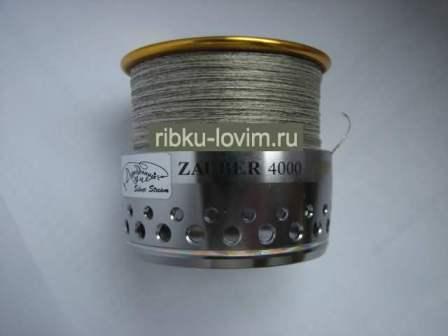
Should I choose a spinning or spinning reel?
There are two types of spinning reels: spinning reels and inertia reels.
Inertial coils, otherwise multiplier coils, are equipped with spinning rods belonging to the heavy class, which are designed for power struggle.
Such a reel will be very difficult to cast far with a light bait.
The most important thing is not to miss a bite!
You can get into the "fish" place, but not catch anything. Now there are special self-hooking fishing rods with a special mechanism:
- At the time of the bite, the line is tensioned, which leads to the triggering of the hook.
- Fish cut in right moment, remains on the hook, and you just have to get it out of the pond!
Therefore, spinning light class equipped with spinning spools or spools with a fixed spool. It is not difficult to cast such a reel over a long distance with a light bait.

Gallery: spinning reels (25 photos)

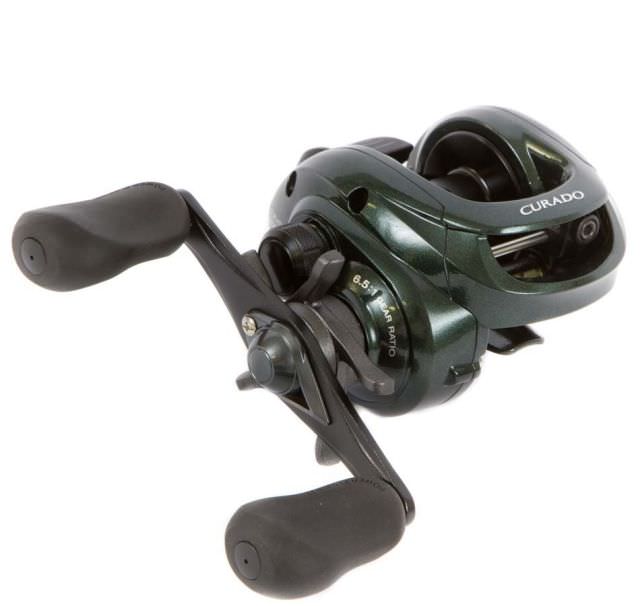



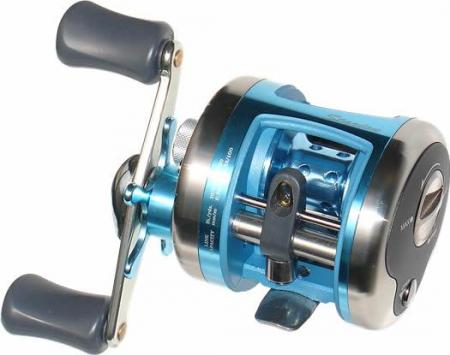

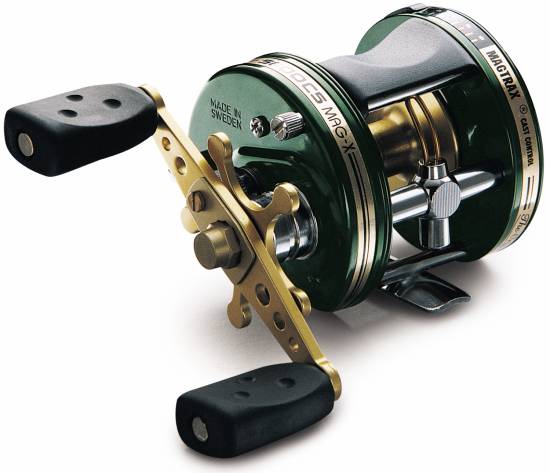
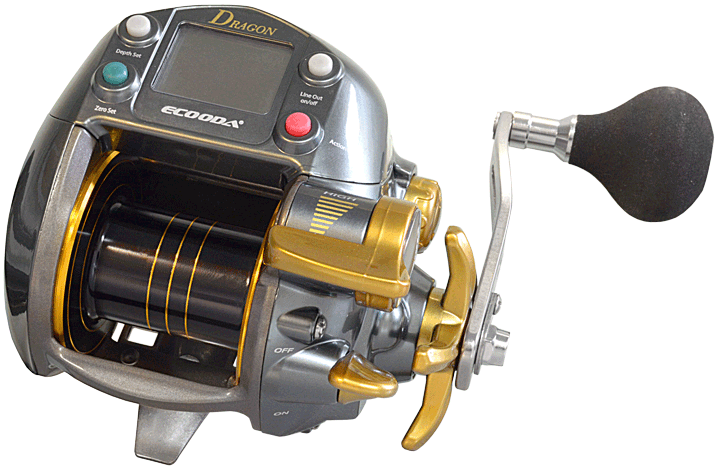



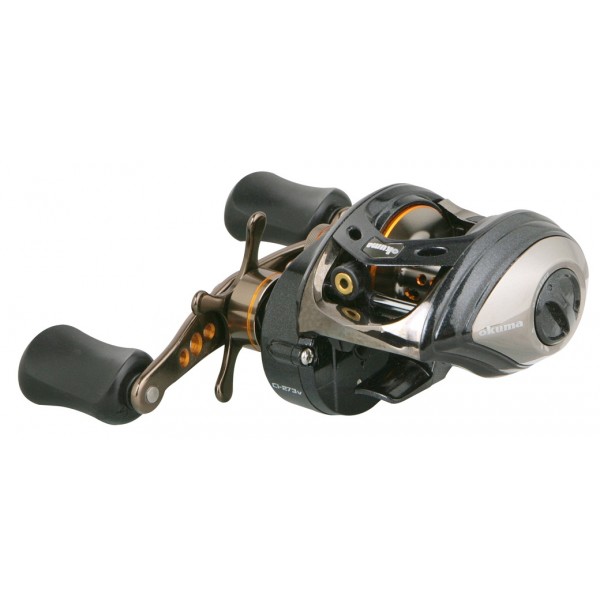
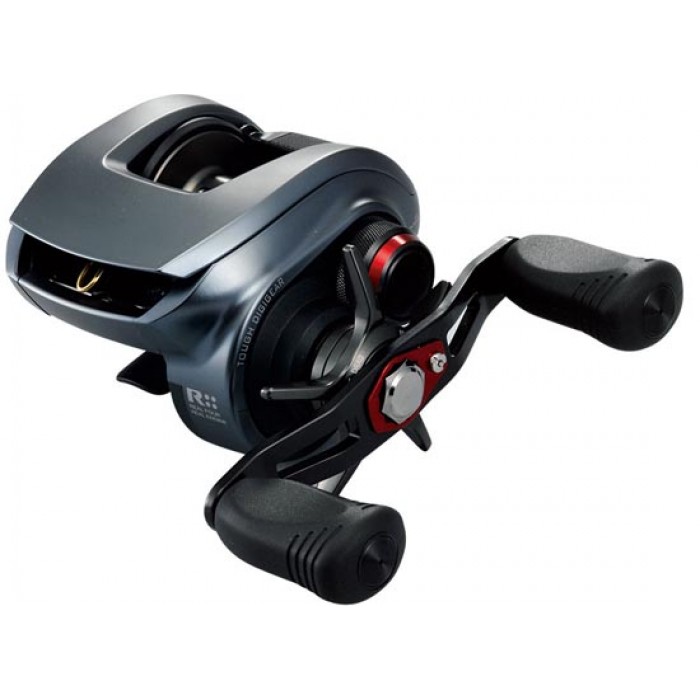
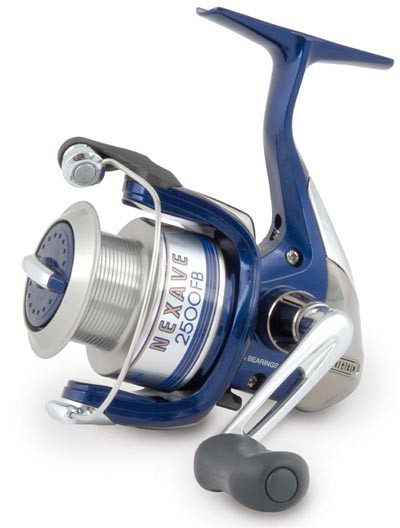

![]()

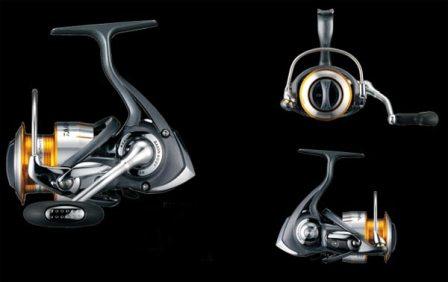
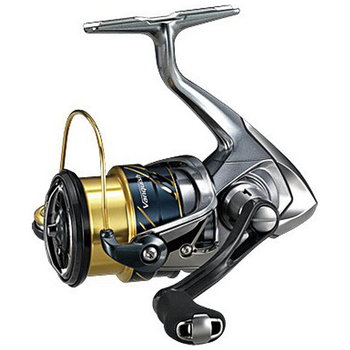

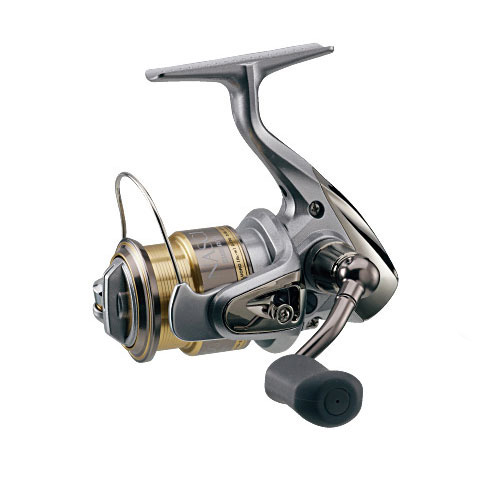
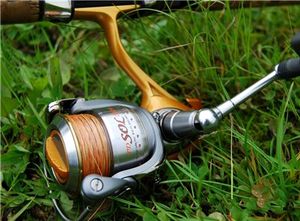

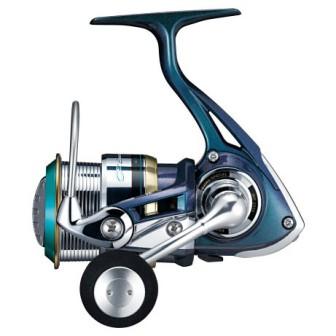

![]()


![]()



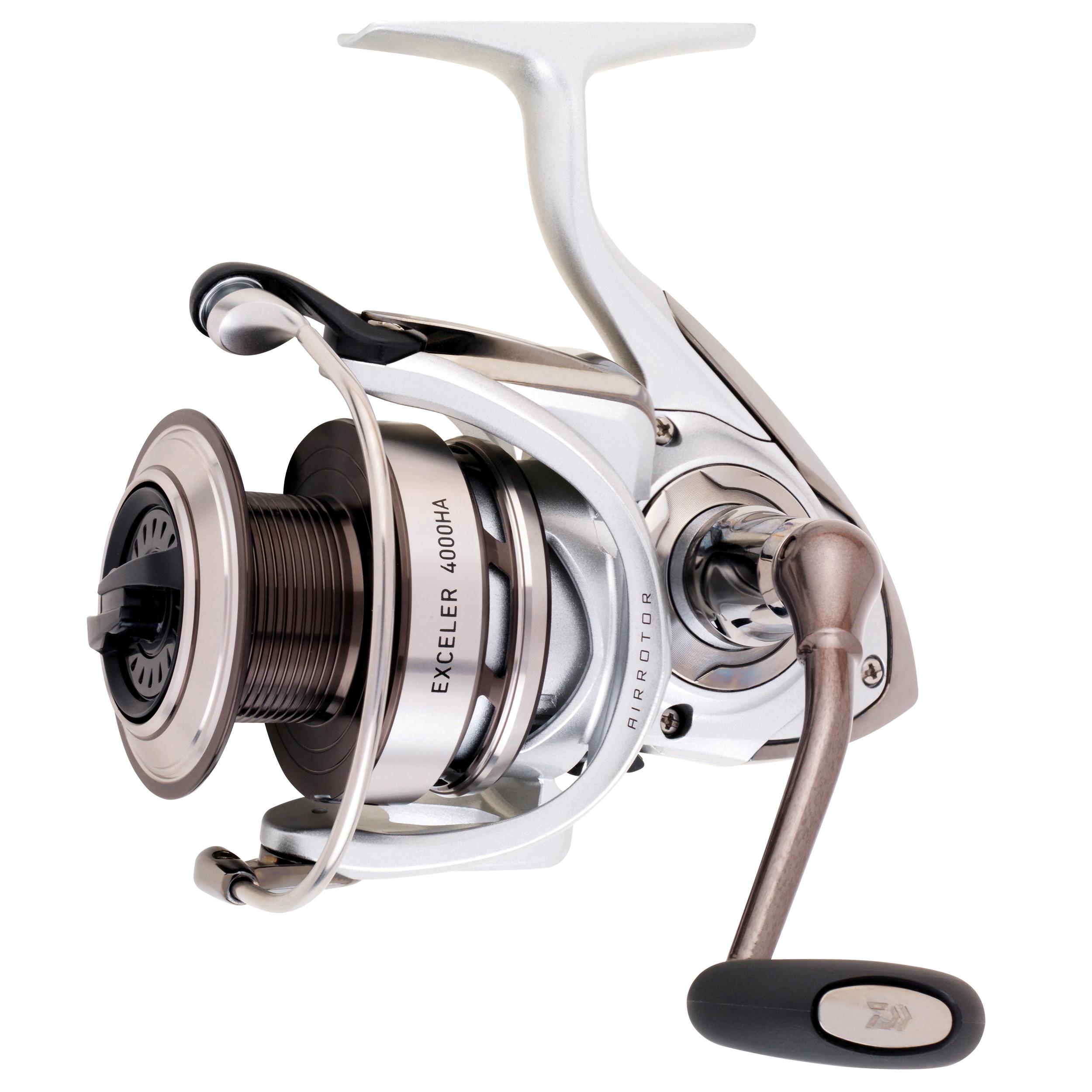



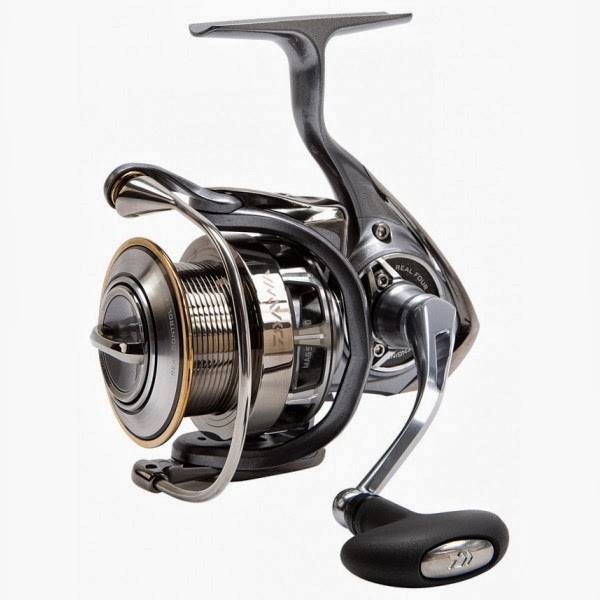
The size and weight of the reel matters
What should be the size of the coil? It depends on the amount of fishing line that fits on the spool. The unit of measurement is 1000, and then they are - 1500, 2000, 2500, which indicate these data on the spool with markings: how much fishing line and with what diameter. Sizes 2000-2500 are optimally suited for light class spinning rods and will fit perfectly into the tackle.

Another important factor reels is its weight. On average, a 2000th coil should have about 300 grams.
How to choose a spinning reel (video)
Reel spool
All reels are equipped with two types of spools: metal and plastic. Metal is used for winding braided cords, casting with such a spool turns out far. The use of plastic or carbon spools is best for fishing line, as the line has a large roughness, so the friction on the top of the spool when casting will be maximum. Due to such friction, the spool will become unusable, and the cord will also deteriorate.

friction brake
The friction brake bleeds the line when the caught fish is pulled out, this removes the load from the line and the blank of the rod. Helps against line breakage and tackle breakage. Fishermen are familiar with two types of friction brake, front and rear.
The front view of the brake is considered the most convenient and sensitive to adjust while fishing.

Number of bearings
In order for the coil to work fully, it must be equipped with a central roller bearing. Some models are labeled as such 4+1 or 8+1 entries.
Of course, fishermen believe that the more balls in the bearing, the better, because this increases the smoothness of the ride and reduces the wear of the rotating and moving elements of the reel, but this applies more expensive models. For beginner fishermen, it is best to purchase a reel with 4 ball bearings and one roller bearing.
Why know the gear ratio
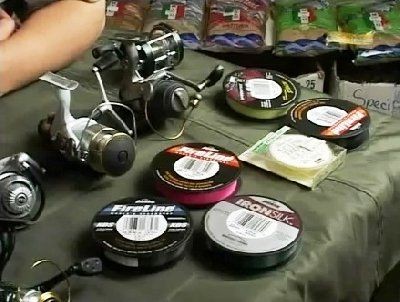
To purchase an inexpensive coil, knowing these data is enough. To equip a spinning rod, you need to purchase spinning coil, in which the metal spool has sizes from 2000 to 2500, and is equipped with a front friction brake. It must also contain at least 4 ball bearings with one roller. The weight of the reel should be no more than 300g, and the gear ratio should be 4:8-5:2. Happy fishing! We also recommend that you read the material on.
How to increase the catch of fish?
Today there are many ways to increase the catch. One of interesting options- bite activator. It attracts fish from long distances and stimulates their appetite with the help of pheromones, which are part of and affect the behavior of individuals. Pheromones are natural biologically active substances that are secreted by living organisms, including fish.
Does it all really work? How not to buy a pig in a poke? Read the details in our review.
Attention, only TODAY!
Now most anglers use inertial coils, considering them more progressive and perfect than inertia, this is true, but only in part. Yes, inertia has its drawbacks - this is a low winding speed, quite frequent tangling of the fishing line, the formation of the so-called "beard", which is why it is very inconvenient to use them in windy conditions, the weight limit (for normal casting minimum weight bait must be at least 18 grams). At the same time, an inertial fishing reel has a number of advantages - this is simplicity of design, reliability, relatively small cost, good sensitivity.
- You will be able to fully experience all the advantages of an inertial reel over a non-inertia reel, since the ability to hand over the fishing line simply by turning the drum in the opposite direction makes the fishing gear as high quality and efficient as possible. You do not need to constantly help yourself with a rod, and the line will always be tight, because it will not twist like when leaving the spool of an inertialess reel.
- If you decide to fish with a spinning rod on massive jig baits or with a donkey on heavy feeders, then using an inertial reel will be more profitable, since the inertial reel has a simple and robust design, which makes it very difficult to damage its mechanism with overloads. It is also very convenient to fish with an inertial reel for a jig from a boat.
- It is good to use an inertial reel when fishing with small jig lures, in strong currents. First you need to reel up the tackle so that the bait rises into the water column, and then hand over the line a little so that the head touches the bottom, for this we make two turns towards ourselves, and then turn the coil in the other direction until the jig touches the bottom
- Inertial coil for trolling fishing, will also not make you regret your choice, though this case it is more appropriate to use multiplier coils with a counter.
- Wobbler fishing with an alloy with a small hold, pike fishing with live bait, sheer lure from a boat, fishing with jerkbaits (in cases where you do not want to purchase tackle specially sharpened for them). For any of these fishing methods, an inertial reel is perfect.
Of course, speaking of inertial coils, I mean coils that are a standard drum. There are also multipliers, they are also inertia according to the principle of action, but we will talk about them separately.
Modifications of inertial coils
The main reason for the unpopularity of inertia is that there are often coils on sale, which in their design have nothing but a drum located on a cylindrical axis. With such reels, when casting, the tackle flies not far, and the winding speed is very low. Of course, the simplicity of this design makes it less susceptible to water and sand, it is enough just to remove the drum from the axis, dry it and clean it, there is nothing special to break there. At good coils the axis and the sleeve of the drum are made of high quality metal, tightly fitted to each other, as a result they serve for a long time and do not make noise when casting.
In order to increase the performance of these reels and make them more durable, a ball bearing was added to the design, the inner ring of which is planted on the axis, and the outer one is fixed to the drum through the hub.
More advanced models are coils "on cones", the actual cones form the axis of the coil, they are made of hardened high-carbon steel, and their working surfaces are carefully polished. The bushings of such coils are often made of phosphor bronze and pressed into the hub on the axis of the drum. Such coils produce almost no noise during operation.
Also on sale there are reels that have two bearings located on both sides of the axis, such an inertial fishing reel, has a smooth ride and fairly fast winding, allows you to cast gear over fairly long distances. But when using it, you need to be careful and prevent sand or water from getting into the mechanism, otherwise the coil will fail. In order to correct the situation, you can replace the bearings or lubricate them liquid lubricant, well, in extreme cases, any that is.
Inertial fishing reel, drum
Material
Basically, the drums of inertial coils are made of aluminum, there are also titanium ones, such coils have less weight and a very smooth ride, but their price is much higher. Also on sale there are coils made of sheet steel.
Inertial reel drum size
The size of the drum affects the winding speed. Coils with an enlarged drum allow you to reel in the tackle faster. Unfortunately, they are heavier, so if you switch from a standard reel to a larger one, you will have problems with casting distance at first. But with such a reel, when casting, the speed of rotation of the drum is less, and the chances that the fishing line will fly off and get tangled in the beard, respectively, too, besides, at lower drum speeds, it is easier for us to control the line coming off with the help of a finger.

If we compare inertial reels with non-inertia reels, then the latter can select about 60-70 cm of fishing line in one revolution, while the usual inertia is 30-40 cm. Therefore, to increase the winding speed, you can choose a reel and whose handles are closer to the center of the axis, though such a coil loses power.
Brake system of inertial coils
Mechanical brake "ratchet"
In simple Russian and Ukrainian coils, it is located with reverse side drum and resembles a tongue, it has two positions, at the first the tongue does not contact the gear and the drum can rotate freely. If it is moved to the second, then the tongue will engage with the teeth of the gear, and the drum will rotate with a certain force, depending on the power of the spring. When moving, characteristic clicks are heard, which is why it is called a "ratchet". It is needed by novice anglers so that at the moment when the casting power runs out, our fishing line does not jump out of the drum and does not get tangled, on many reels the braking force can be adjusted.
Unfortunately, not everyone succeeds in clearly setting the braking force so that a beard does not form and at the same time the tackle flies quite far, which is why experienced anglers slow down with their fingers (we cast the tackle even at the moment when the line on the reel starts to fluff up, slow down the speed of rotation of the drum, pressing the cheeks of the coil with your finger). Western manufacturers do not have a "ratchet".
Stopper
Also inertial coils have a stopper reversing, it is needed so that the fishing line does not arbitrarily unwind when transporting tackle, it is also used when catching on a track or playing trophy specimens.
Inertial fishing reel, friction brake
Now you can find inertial coils on which a friction brake is installed, for example, for the Nelma coil, the friction clutch is not adjustable, but is turned on by moving the lever, it works with a force of 1.5-2 kg.

Reel with adjustable drag
You can also find reels with adjustable drag, almost like freewheel reels.
Inertial reel for fishing line selection
The inertial reel can work with both monofilament and braided line. The thickness of the fishing line does not affect the casting distance of the tackle, the fishing line of 0.3 and 0.7 mm flies almost the same.
Monka has good stretchability, which helps us when playing, so when playing a fish, we feel that the line is first springy, and then stretched like a string, which means that at any second the fish can break it, we carefully begin to wind the reel into another side, handing over the fishing line, this cannot be done on a non-inertial. Of course, there is a friction clutch, but it is inconvenient to adjust it during the fight.
In cases where we put a braided line on an inertial reel, it should be taken into account that the braid does not stretch, and we will not be able to determine whether fish jerks are successfully extinguished, as in cases of fishing on a monofilament. We need to be prepared for the fact that the line will break at any moment, so we need to use reels that have a friction brake. As a result, we have an amazing sensitivity that allows us to literally feel any irregularities and drops in the bottom.
Placement of the inertial reel on the rod
Usually the reel is set so that the drum is placed along the axis of the rod, although there are reels in which the drum can be rotated through an angle of 90 °, becoming perpendicular to the axis of the blank. That is, initially the reel is located along the rod, and before casting, we turn the drum, putting it in the “across the rod” position, when the bait is cast, we turn the drum back and start wiring. Such constructive solution makes it easier to cast the spinners, since the line leaves the drum without turning it, like with a spinning wheel, which significantly reduces the chance of a beard
Choosing a spinning reel
So, let's summarize everything that we considered earlier and decide what features an inertial reel for spinning fishing should have. First of all, the drum must be made of high-quality metal coated with protective layer, if we take the coil in our hands and try to bend it, then it should not be deformed. Its diameter is also important, so that we can quickly reel out the fishing line, it must be at least 90 mm, or more. The coil should be on cones or have a bearing, it is better when there are two ball bearings, and they are located on two sides of the axis. The drum handles are comfortable and reliable, so that we can comfortably carry out winding. They should not be installed on the very edge of the drum cheek, but at the same time not near the axis, otherwise the coil will lose power. If you want to use baits weighing 5-10 grams, then your reel must have an aerodynamic brake like the Russian Nelma reel,
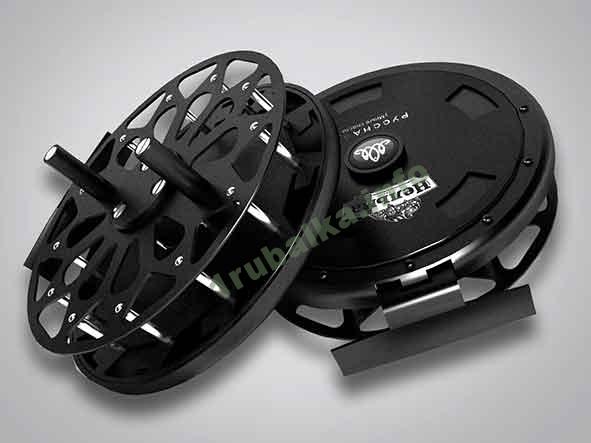
well, or another constructive solution that allows you to extinguish excess inertia and throw light baits. Also, your reel must have a reverse stopper, a “ratchet” and a friction brake. If you are still undecided, try turning your attention to inertialess coils.
Inertial reels for fishing in the wiring on the float
When fishing from a boat, wading or shore, where the casting distance does not exceed the length of the rod, when choosing a reel, you should pay attention to the following points:
The drum, you need to choose one in which the main part of the mass is concentrated near the axial hole, then your coil will have less inertia, and therefore, the drum will be easier to slow down when the bait falls.
It should have an easy and smooth move, so that the float, under the influence of the current, reels the fishing line without your participation. An excellent choice would be coils on two ball bearings. Based on these considerations, the coil should not have a large drum
She should have: a “ratchet”, a friction brake and a reverse stopper.
Handles are made of high quality material and as in cases spinning reel, not be located too close to the edge of the drum and near the axis.
Which inertial coils are worth buying
Undoubtedly, in the price-quality ratio, the Russian inertial reel for fishing "Nelma", is the direct leader, it is made of light aluminum alloys, has two ball bearings, an aerodynamic brake, a reverse stop, a ratchet, a friction clutch, high-quality ergonomic handles. This reel is perfect for both spinning and floaters when fishing in wiring. The analogue of this coil is the Ukrainian coil "Stool".
For fishing on a float in a wading line or from a boat, you can purchase reels Chinese company Akara, their quality is worse than that of "Nelma" but the price is less.
For people who have a fairly wide budget, great choice coils will become Bewick And "Conquest" from an English company Hardy.
Now you know what an inertial fishing reel should be, but in the next article we'll talk.
Videos inertial fishing reel







